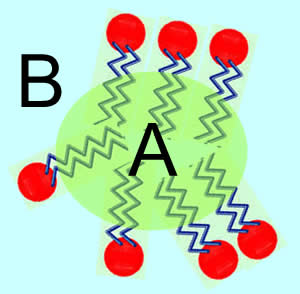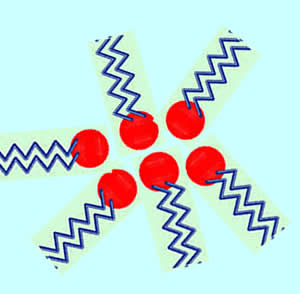Look at the video on the right as an introduction to the cell membrane. Answer the questions below.
1) Describe the structure of the phospholipid.
2) Define the terms hydrophobic (lipophilic) and hydrophilic (lipophobic).
3) Describe, with reference to a micelle, how the structure of the phospholipid helps it align itself in water.
4) Explain the fluid mosaic model of the cell membrane.
5) The membrane contains many embedded proteins. One type is a glycoprotein? What is its function in the membrane?
The cell membrane is considered to be the skin of the cell. It is composed of specific proteins and lipids, which are involved in an array of cellular processes.
The many functions of the cell membrane include:
- control of the internal environment of the cell for optimum functioning;
- the regulation of transport of nutrients and waste in and out of the cell;
- cell recognition and communication between cells;
- the provision of anchoring sites for the cytoskeleton or cell wall, as in the case in plant cells.;
- providing integrity to organelles;
- active transport of substances.
The membrane can be described as a phospholipid bilayer in which are embedded special proteins. The lipids are amphipathic, that is they have a hydrophilic (water loving) polar end which points outwards and a hydrophobic (water repelling) end pointing inwards.
As pictured on the right, the structure of the membrane can be described using the fluid mosaic model. Where proteins move about floating in the lipid bilayer.
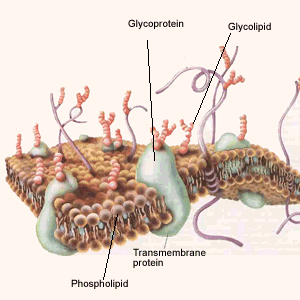
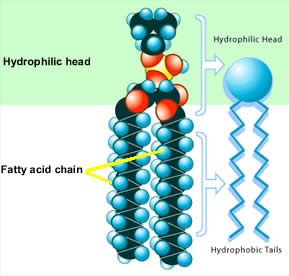
A closer look at the two fatty acid chains reveals some important differences. One of the fatty acid chains is saturated (has no carbon-carbon double bonds) and hence is linear while the other is an unsaturated fatty chain with a carbon-carbon double bond. At the site of this double bond the chain is forced to kink. This is very important in maintaining a fluid membrane as the kink does not allow the phospholipids to pack tightly together. This makes the bilayer difficult to freeze.
Click to see an animation of the molecule
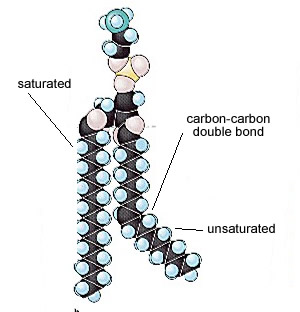
-immobilizing the first few (CH2 ) groups of the phospholipid molecules which makes the lipid bilayer less likely to deform and hence decreases the permeability to small water soluble molecules. Otherwise, without cholesterol in the cell membrane to give it firmness a cell wall would be needed, as occurs with bacteria,
-preventing the membrane from solidifying and helps keep it consistently in the fluid state..

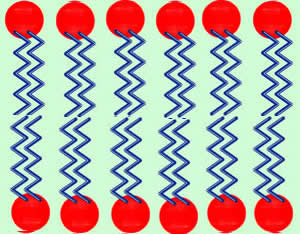
Which one of the following best describes the black object on the right?
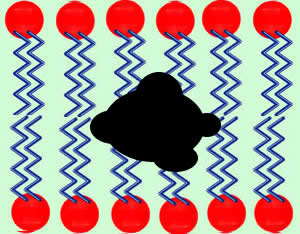
Which one of the following best describes substance A and B?
